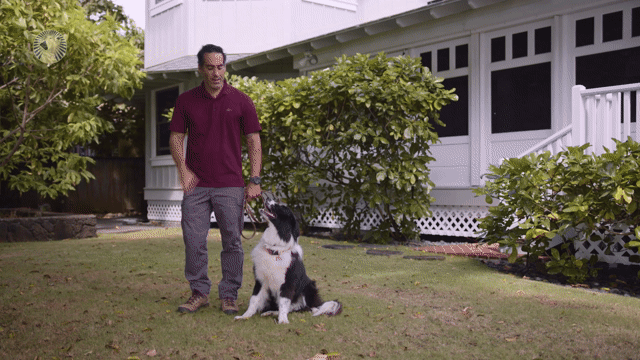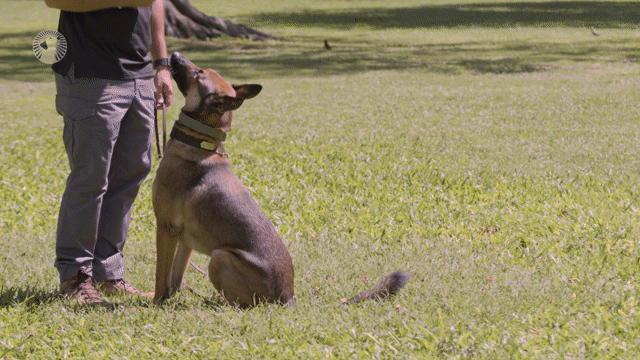
Popular Dog Training Methods
Dog training is a passionate subject for many pet owners. What is the best way to train my dog? When should I start training my puppy? How do I know if my dog is aggressive or just scared?
These are all questions that people ask themselves when they’re looking into what method of dog training would be best for them and their pup. There are many different ways to go about it and lots of philosophies on which one works best. The most popular methods, however, fall into three main categories:
- positive reinforcement
- dominance-based methods
- those that use both punishment and reward as motivators.
So, let's take a look at each category and the associated training methods to gain insight into which is best suited to your pup.
Before we do that, though, it’s important to understand a little bit about how dogs learn and how they respond most readily to these three different methods. Take a few minutes to pop over to our discussion on the basics of dog psychology. That article can give you a foundation for understanding how to choose a training method.
Without further ado, let's dive into the most popular dog training methods.
1. Positive Reinforcement
When most people think of dog training, they immediately jump to using positive reinforcement dog training. Positive reinforcement involves giving your dog something it likes in order to motivate them to do what you want. This can be food, petting, playtime, or verbal praise. This is an extremely effective way to teach your dog new behaviors when used correctly.
However, positive reinforcement does have its downsides. For example, you will need to carry treats or a clicker wherever you go when training your dog. Also, giving your dog something it likes to get them to do something can create an environment where the dog always wants something from you and may become dependent on that reward.
Nevertheless, positive training for dogs is perhaps the most popular method. This is mainly because of its ease and the fact that it's very effective.
What are the Main Steps of Positive Reinforcement in Dogs?
Positive reinforcement dog training is a straightforward way of getting your dog to do what you want. The main steps in this method are:
1) Figure out your dog's motivation (food, play, etc.) and ensure you have plenty on hand when training.
2) the moment when your dog does something you like, give them what they want to make sure they know it's the right thing. If they do something bad, you ignore the undesirable behavior.
3) reward your dog over and over again for good behavior.
4) repeat steps 1-3 to transform that into a habit.
5) be patient; repetition is key. Even the most well-trained dog will forget how to sit if you don't practice.
Does Positive Reinforcement Work for Dogs?
Reward training is probably the most effective method of dog training because it's easier to use than other techniques, especially for beginners. It's also very effective in getting your dog to behave exactly how you want them to.
However, there are two problems with positive reinforcement dog training that may affect its use in certain cases: rewards must be given immediately or not at all. Dogs will only respond if they know a reward comes after a behavior. Therefore, they may perform a task solely because they anticipate a reward, not necessarily because they try to please you.
As Daniel explains throughout the Beacon Dog training course, this can become a problem when trying to train certain behaviors because the dog may not understand why it's being asked to do something or its motivation for doing that thing. As you can imagine, this would only create confusion for any dog.
Despite a few negatives, it is also one of the most versatile methods as it can be combined with other methods easily. Finally, positive reinforcement dog training is great for training dogs of all ages and breeds.
What Can Be Used as a Reward During Training?
Examples of positive reinforcement include:
- Food treats are the most common reward for dogs. These are great because they are easy to use. However, you need to make sure that your dog is hungry before giving them a treat, or else it will not motivate them.
- Petting or verbal praise can also be used to reward your dog. These are less common but work just as well as treats if done properly.
- Games and playtime can be used as a reward for dogs who find this motivating. While not the best choice for every dog, activities like fetch can turn an ordinary training session into something fun and engaging.
What is the Difference Between Positive Reinforcement and Positive Punishment in Dog Training?
Positive reinforcement dog training means rewarding your dog for performing the desired behavior, while negative reinforcement means removing a negative stimulus when they perform the desired behavior. For example, if your dog sits down when told to, you would give them a treat as a reward. Sitting down is what you want, and the treats are the reward. On the other hand, if you shock the dog with an e-collar until they sit down, then stop shocking them when they sit, you remove the negative stimulus (pain) when they do what you want.
At What Age Should You Start Positive Reinforcement Training?
This method may work better for slightly more mature dogs than puppies. However, the best way to determine that is for you to experiment. If your dog or puppy seems confused, try a different method. If your puppy responds well to this training, continue with it until you master the technique.
2. Science-Based Training
Science-based training is a form of positive reinforcement that uses techniques, tools, and tactics to help you teach your dog new commands. Dog behaviorists apply scientific principles to understand the importance of teaching by effectively communicating with them in ways they comprehend rather than coercion or force. This will only cause resentment from both parties involved, translating into negative behavior.
So what's so different? There are many similarities between science-based trainers and traditional ones: reliance upon reward systems (verbal praise/marker words like "good job" and food rewards), ignoring unwanted behaviors, etc.
What is the Learning Theory in Dog Training?
The learning theory is the study of how dogs learn new behaviors and change their behavior/reaction to certain stimuli. And while this is important for dog owners to know, it's no use unless they apply their knowledge of this to training.
What Are the Four Stages of Learning in Dog Training?
In dog behavioral psychology theory, it is believed there are at least 4 stages of learning for dogs to commit commands to their memory and enact it on cue. The four stages are:
- Acquisition - This is the first stage, where you're actually teaching them the command.
- Fluency - This is the second stage, which comes after the initial learning period has passed. At this point, your dog will be able to perform the command on its own.
- Generalization - This is where your dog applies what they know to different areas/situations than what it was originally taught in. For example, if you've taught your dog to sit on your left, they may do so when at the park or in the living room.
- Maintenance - This is the final stage where your dog will continue to apply what they know. Maintaining your dog's knowledge of commands is just as important as teaching them so that they continue to do it even when you're not around.
3. Clicker Training
Clicker training (also known as operant conditioning dog training) is a good method for learning a new behavior but not effective for thwarting unwanted behavior. It is especially useful when training young puppies or animals with short attention spans, who often respond better to the sound of a clicker than food.
How Clicker Training Works for Dogs
The main principle behind clicker training teaches your dog new commands by associating them with an audible stimulus. Dogs have a very acute sense of hearing, and they use the sound of a clicker to understand that it is going to be followed with something rewarding.
Clickers and dog whistles can also be used in a negative reinforcement dog training environment because the "click" noise is paired with something your dog doesn't like (such as a shock from an e-collar). Since they understand the association, they will do the desired behavior in order to avoid that negative stimulus.
At What Age Should You Start Clicker Training?
Clicker training is a great method for starting training routines with young puppies or dogs. One of the most difficult times to train a dog is when it's still young, and this process allows you to easily communicate with them about what behavior they should be exhibiting. Puppies are super curious about their world, and things that stimulate their senses will inevitably attract their attention. The clicker is one such thing that can be used to grab their attention for training purposes.
4. Electronic Training
Electric collars (or e-collars) are a special tool used to train dogs and stop unwanted behaviors by delivering an electric shock. They fit similarly to a standard collar. However, they have two special prongs connected to a battery. When a dog misbehaves, an owner pushes a button on the remote, and a shock is released. Different types of shocks can be used, from low to high intensity. As discussed above, this method is often used in conjunction with positive punishment.
The Pros and Cons of Electronic Training
Electronic training is best used in the short term (less than two weeks) to train your dog in certain commands. It can also be helpful for refocusing the dog's attention on you. Some people use it more to deliver negative reinforcement and punishment.
However, it is important to note that this method only punishes bad behavior. It doesn’t teach the dog what it should do. If this method is overused or if the wrong type of shock is emitted, it can result in aggression, pain, fear, anxiety, and confusion for your dog. Therefore, if you choose this method, it is best to consult with a professional dog trainer to better understand how to use this tool effectively.
5. Model-Rival Or Mirror Training
With this method, your dog learns by example. It is a more natural method of dog training as it promotes a strong owner bond as the dog observes your behaviors. It's also perfect for at-home training rather than scheduled sessions.
What are the Main Points of Mirror Training for Dogs?
Essentially, the dog competes against another human model and mirrors the owner's energy and movements. When the dog performs as expected, they get rewards for mimicking behavior. You may notice this method in action at dog shows as the owners run the course along with their dog.
6. Alpha Dog Or Dominance Training
This method is the most primitive as it relies heavily on an outdated understanding of basic dog psychology and focuses on dog social hierarchy and pack mentality principles. The idea is that when you establish yourself as the Alpha, you teach your dog where he stands in the pack.
Owners who use this method are often seen as being “very alpha” with their dogs, meaning they are firm when directing and reprimanding behavior. This doesn't mean that you need to physically dominate your dog; it just means that you establish yourself as an authority figure and entice the dog into submission.
This method is losing popularity as it requires constant reinforcement that can lead to power struggles. If you create an environment where they feel they need to compete for power, they will act on opportunities as they arise.
7. Relationship-Based Training
This method combines other methods to adapt to a specific dog’s personality and energy. It is the best method for when you want to bond with your dog on a deeper level.
How to Train Your Dog with Relationship Based Training
This method is best used when you are willing to take time for training and understand your dog’s personality. The basis of the training lies in developing a solid relationship between owner and dog through positive reinforcement, communication, control, trust, accountability, praise, guidance, leadership, patience, boundaries, and consistency. Essentially you will want to follow the same basic rules: have fun, be patient, and reward good behavior.
Conclusion
Which method is best for your dog? Unfortunately, there is no one-size-fits-all approach. The best way to determine which training method is right for your dog and your situation is to carefully observe your dog's cues while practicing. If the method results in a desirable change in behavior, then continue with that method. If your dog is not responding to the method, try a different approach (like combining techniques) or consult with a professional trainer.
The Beacon Dog Academy online training course focuses heavily on positive reinforcement as the primary training method, with corrections and redirection used only as needed. This is done to avoid any potential negative associations created by using harsher methods.
If you're interested in enrolling your dog in our online course, please enjoy this FREE introductory video where you will meet the instructor, Daniel Barrett. You will also have the opportunity to explore the Beacon Dog Academy website and learn how the course is structured. After completing the introductory course, you will be ready to enroll your dog in the main course.
Useful Ressources

Key Training Tools and Gear
As a dog trainer, you need the right tools to make training your dog easier. Learn how to choose the best dog training tools and gear for training sessions.

Loose Leash and Heeling Techniques
A step-by-step breakdown of how to teach your dog loose leash walking. These techniques can also be used for any behavior that needs shaping while on a leash.

Problem-Solving Theories
Learn how to correct dog behavior problems (including food possessiveness and aggression) in order to make your life with a dog so much easier.

The Primal Power of Food
How to motivate your dog using food. Learn how to use food throughout your dog’s life to get the best out of them. Become an expert in motivating your dogs!

The Basics of Dog Psychology
You love your dog, but do you really know what your pup is trying to tell you? Most people don't. Dogs have a complex language of their own, and if we want to learn how to communicate with them on a deep level, we need to understand this language better.

Building Confidence in Your Dog
This article will help you teach your dog that he can overcome any hurdle, building confidence and a greater bond with you along the way.

How Dogs Use Their Senses in Training
Learn ways to train your dog through sense-training exercises that will allow your pup to learn new commands while also stimulating their natural instincts.

How Do I Get My Dog to Ignore Distractions?
Teaching your dog how to focus on you is one of the greatest challenges in dog training. As the alpha dog of your pack, you need to cut through the noise. But, how?

Should I Use a Prong Collar Forever?
Once your dog is well-trained, you may think you don't need a prong collar anymore. As a powerful psychological tool for dog training, do you still need it?

How to Get Your Dog to Focus on You
Many people have difficulties with their dogs not paying attention to them and getting distracted by other things. This can be a complicated problem, but there are some ways that you can work on it!